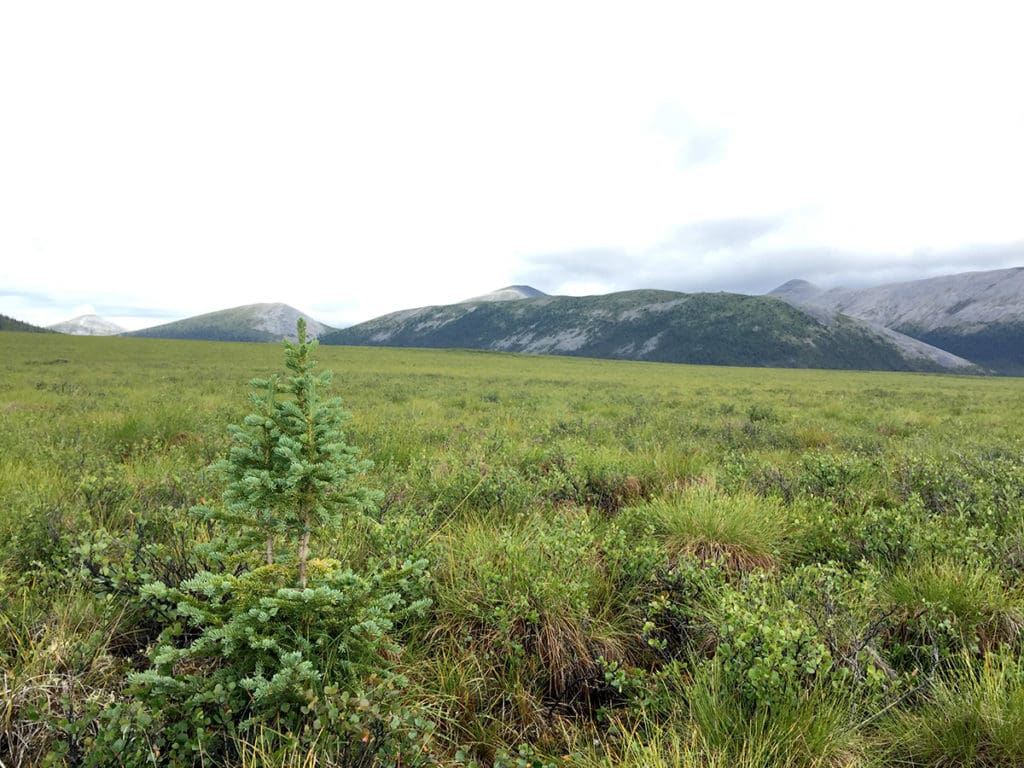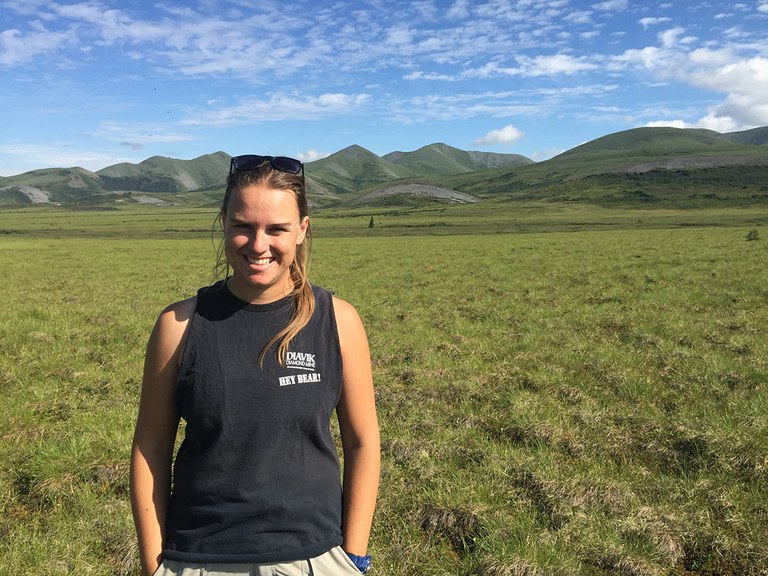In 2018, we awarded Kirsten Reid a Sarah Baker Memorial Fund grant for her ambitious project in one of the wildest places on Earth — northern Canada’s Greater Mackenzie Mountains.
Reid is a PhD student in the Department of Geography at Memorial University of Newfoundland. We caught up with her to learn more about her fieldwork in the North.
Last summer, Memorial University’s Kirsten Reid took one epic road trip. Together with two other graduate students, she traveled more than 700 miles (1,118 kilometers) in the Yukon including the Greater Mackenzie Mountains, from Whitehorse to Dawson and along the white-knuckle road from Inuvik to Tuktoyaktuk.
Along the way, Reid saw huge, productive forests and small, stunted trees. She saw black spruce and white spruce, tamarack and tundra. She saw an endlessly varied, beautiful place. She saw what wilderness looks like.
To conserve and protect a large, intact landscape like this, we need to know what’s there. At 12 key locations across eight degrees of latitude, Reid began sampling the soil, the light, the plants and animals to examine later in a lab. She also set up remote cameras to find out about the wildlife.
“I’m driven to understand how species interact in these northern ecosystems. I want to help create ways to promote biodiversity under a warming climate.”
Thanks to funding from her Sarah Baker Memorial Fund grant, this summer Reid will go back to collect the data she’s been recording at those sites. She says, “I’m also establishing six new sites in previously burned areas.”
At that point, she’ll use this data to understand how biodiversity levels in post-fire landscapes compares to the amount of life in an undisturbed area.
All this exciting fieldwork is to ultimately help understand what affects the range of tree expansion in the subarctic. Since tree formation and growth is affected by both living (biotic) and non-living (abiotic) conditions, it’s important for researchers to measure and evaluate these factors.
“Trees are ubiquitous,” she says. “They can seem unassuming. Yet there are so many questions researchers and ecologists all over Canada are asking about them. Everyone is studying different things, because there are so many questions worth answering.”

“We know that the North is already being affected by global climate change — that includes shifting distributions of plants and animals, which means that the forests of tomorrow aren’t going to look like what we see today,” says Dr. Aerin Jacob, Y2Y’s conservation scientist.
“Since the Greater Mackenzie Mountains are the ‘northern anchor’ of the whole Yellowstone to Yukon region, it’s crucial that we understand and can respond to environmental change. Research and outreach, such as the work Kirsten’s doing, are a critical part of forward-thinking conservation.”
As for Reid’s favorite tree?
“It’d have to be black spruce,” she says. “They can grow in wet boggy areas. They can grow in super productive spots. They can even grow 30 miles (50 km) south of the Arctic Ocean. They’re in places you don’t expect them to be. They’re hardy.”
The same could be said of Reid. Standing on the edge of the Arctic Ocean during her road trip last July, she watched rolling waves that were frozen white just a month before. Then she took off her socks, her boots, and walked right into the water.
Collaborators on this project include: Dr. Carissa Brown, Bruce Bennett with the Yukon Conservation Data Centre, Vuntut Gwitchin First Nation, Tr’ondëk Hwëch’in First Nation, and the Inuvialuit whose traditional territories this research takes place on.
Read more about Kirsten’s research in this June 2020 follow-up post.
The Sarah Baker Memorial Fund supports student projects that advance Y2Y’s conservation strategy and result in tangible benefits within the region. Sarah Jocelyn Baker’s appreciation for the natural world and ability to find solutions resonate with the aspirations and vision of Y2Y. We are honored to carry her spirit forward through the Sarah Baker Memorial Fund. Thanks to a gift from her extended family, Y2Y is able to offer grants to post-secondary students and postdoctoral fellows pursuing environmentally related studies in any post-secondary institution.


